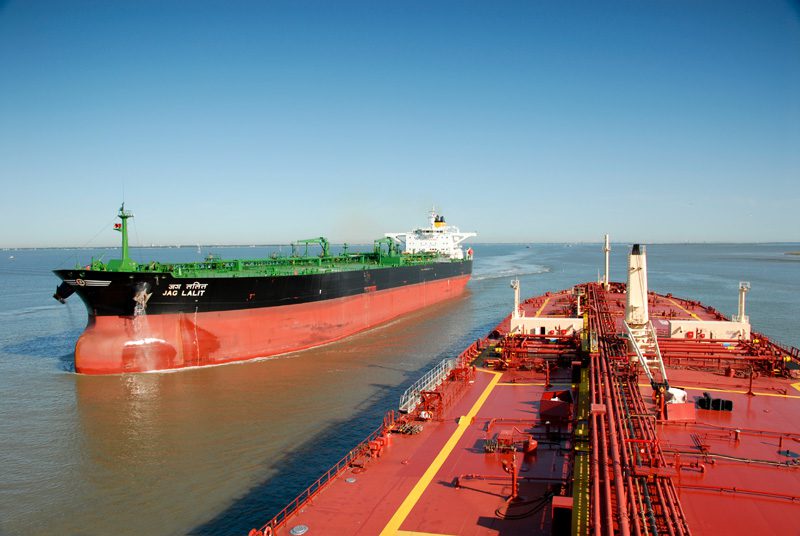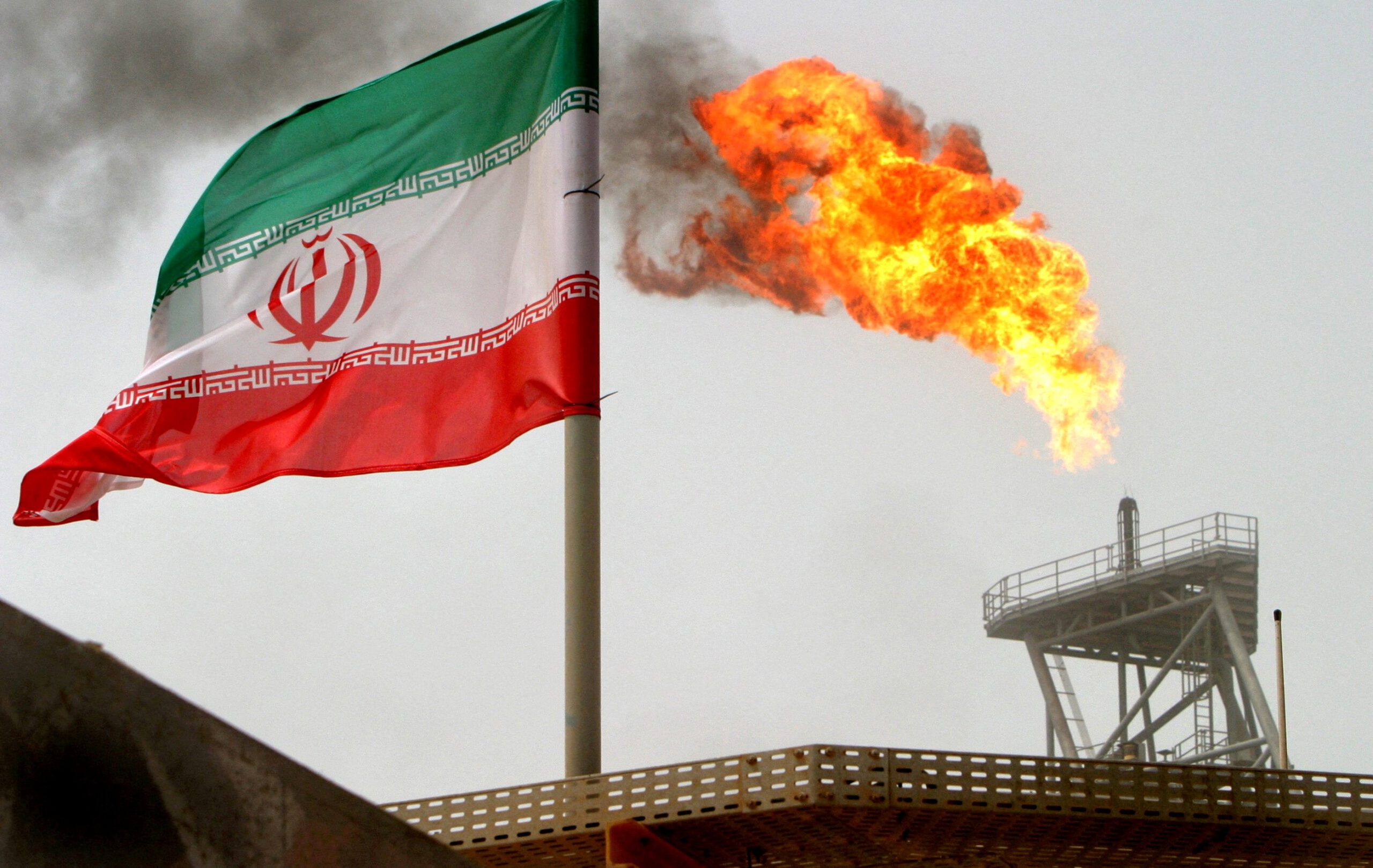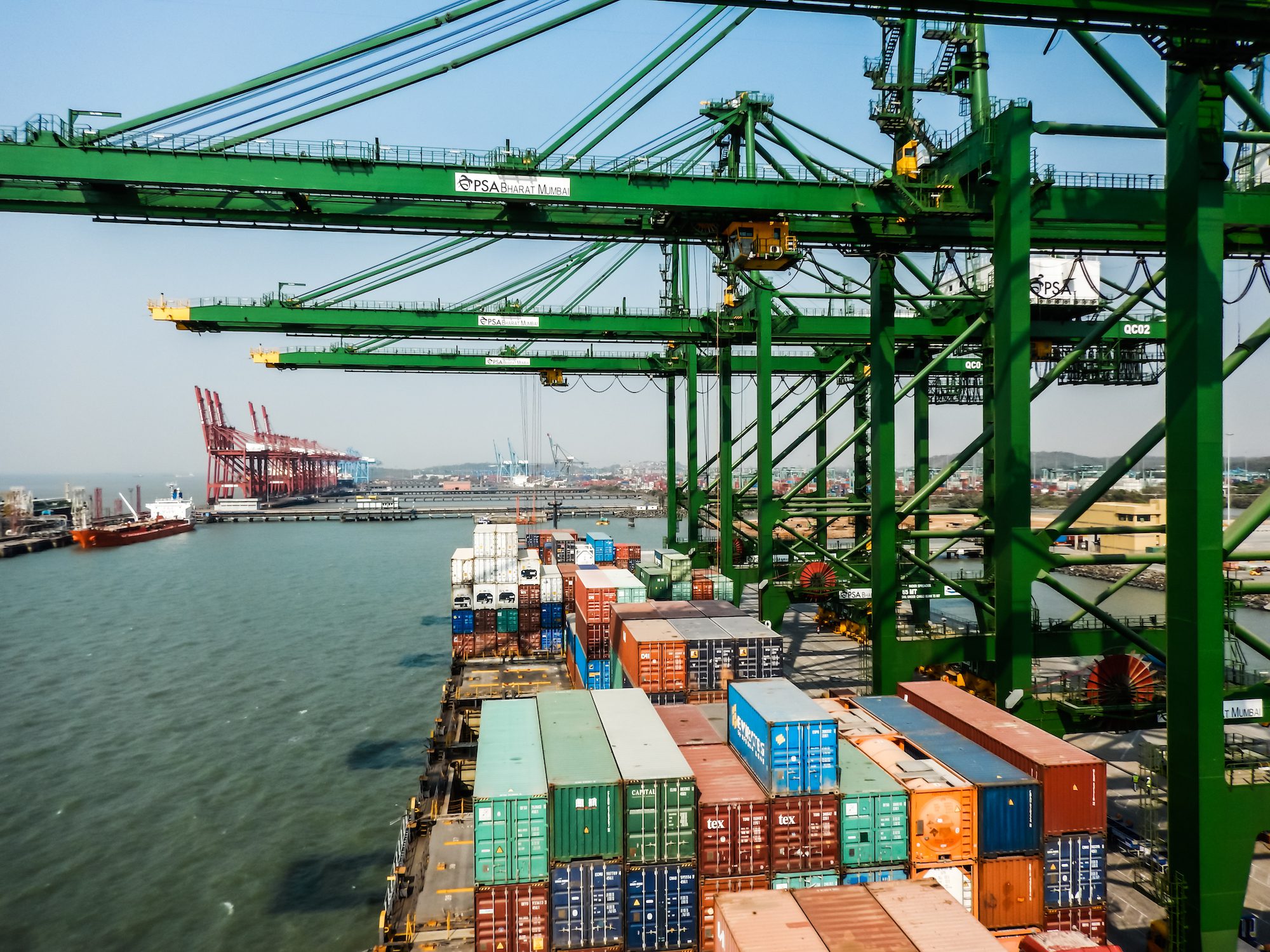“One Whistle” image by Houston Ship Pilot Lou Vest
Feb. 24 (Bloomberg) — It takes an expert pilot to pull off the Texas Chicken.
The maneuver, in which crossing ships set up for a head-on collision and use each other’s wave pressure to swerve safely past, is the only way to handle two-way traffic in the Houston Ship Channel, which connects downtown with the Galveston Bay and Gulf of Mexico. The narrow waterway is used by some 400 vessels every day, from barges to tankers almost as long as the tallest skyscraper on the horizon.
“We’re still trying to stuff these bigger ships up these tiny ditches,” said Captain Mike Morris, presiding officer of the Houston Pilots, the corps of 95 mariners who drive ships on the six-hour trip up the channel. “Everywhere you look in the port, we’re expanding.”
WATCH: This Video Will Make You Want to Become A Houston Harbor Pilot
All along this 52-mile (84-kilometer) shipping lane, there are signs of the energy resurgence that BP Plc says might enable the U.S. to meet all its own needs by 2035. Construction cranes and excavators line the banks. Pipes large enough for a person to crawl through wait to be buried. Ship screens show lists of nearby vessels that run on for pages.
The channel is a symbol of the boom that surrounds it, with truckers getting $5,000 signing bonuses, students flocking to midnight welding classes and out-of-town workers filling up recreational-vehicle parks.
Much of the record U.S. growth in oil and gas output is getting squeezed through Houston, the country’s largest export gateway and the core of the biggest refining region. An average day on the water in 2013 saw 38 tankers, 22 freighters, one cruise ship, 345 tows, six public vessels, 297 ferries, 25 other transits and 75 ships in port, Coast Guard data show.
$35 Billion
“The only thing I can say is, ‘Wow,’” said Tim Gunn, a 39-year-old tugboat captain for Buffalo Marine Service Inc. who has worked on the water for 13 years. “Sometimes you can meet and be overtaken by a handful of ships, 10 to 15 of them. When I first started it seemed like two or three.”
As companies spend an unprecedented $35 billion on expansion projects along the Houston Ship Channel by next year, some are beginning to question how well the century-old infrastructure can keep up. A shortfall in federal maintenance funding means a buildup of sediment is threatening to disrupt commerce that totals an estimated $330 million a day.
At the turn of the 20th century, Houston was a provincial cotton-trading hub with only slightly more inhabitants than its coastal neighbor to the east, Galveston, home to the region’s deepwater port. Buffalo Bayou, less than 10 feet deep, was most of the navigable water between the cities.
After a hurricane battered Galveston in September 1900, U.S. Representative Tom Ball successfully lobbied Congress to dredge the ship channel to a depth of 25 feet.
Houston’s ‘Bounty’
“At that time, Houston was still a small town,” said Janiece Longoria, chairman of the Port of Houston Authority. “Houston owes all its bounty to the ship channel.”
The resulting waterway is four miles longer than the Panama Canal. Today, about 8 percent of U.S. refining capacity lines its shores. It’s home to the country’s largest petrochemical complex, and pipelines link the spot with the oil hub in Cushing, Oklahoma; Chicago and New York Harbor; and oil fields throughout the Midwest and Texas.
All those connections make the ship channel prime real estate in the midst of an energy production boom in the U.S. Increased use of horizontal drilling and hydraulic fracturing has boosted output of crude oil, natural gas and petrochemical feedstocks, while legal and logistical export barriers have reduced U.S. prices relative to the rest of the world.
It’s also turned the little bayou into one of the most crowded waterways in the world.
Deepwater Docks
The ship channel has enough capacity to meet the demand of the surrounding industries, said Charlie Jenkins, the port authority’s vice president of strategic planning. The number of deepwater docks will jump to 45 from 10 in the next few years, said Bill Diehl, president of the Greater Houston Port Bureau.
Vessel traffic in the channel actually declined in 2013 because of bigger ships and fewer oil imports, Jenkins said. Transits by tug boats and ships each fell 6.3 percent to 125,894 and 22,446, respectively, according to the Coast Guard’s Vessel Traffic Service. Total transits fell 4.2 percent to 159,767, plus another 108,357 ferry crossings, data show.
Capacity may be stretched as companies plan to spend $35 billion on new projects and expansions along the ship channel, according to a 2012 Greater Houston Port Bureau survey. That’s creating 265,800 jobs, the study showed. The port’s total economic impact amounts to more than $178.5 billion in Texas and $499 billion nationwide, according to the port authority.
Saturn Rockets
Just north of the channel in Galena Park, sparks fly from a welder’s torch as workers piece together storage tanks for Houston-based Kinder Morgan Energy Partners LP’s condensate splitter project, the first of its kind in the U.S. The first splitter tower lays on its side, resembling the Saturn rockets on display at the nearby Johnson Space Center.
Kinder Morgan and London-based BP are leveraging existing pipelines to bring crude oil from the Eagle Ford in southern Texas to the site. The splitters will distill the oil into byproducts such as naphtha, distillate and kerosene that can be exported or transported locally to refiners and blenders. The $370 million project’s first tower is expected to start this year.
Bostco Terminal
Kinder Morgan and TransMontaigne Partners LP of Denver opened a new $500 million residual fuel oil terminal with 51 storage tanks on the channel in October. The 185-acre site, called Battleground Oil Specialty Terminal Co., or Bostco, was the port’s first all-new terminal in more than 25 years.
Targa Resources Partners LP and Enterprise Products Partners LP, both of Houston, last year opened or expanded facilities to export natural gas liquids such as propane and butane. Enterprise will start construction next year to increase export capacity by 20 percent to 9 million barrels a month. Targa is expanding by 50 percent to 6 million barrels a month by September, the company said this month.
Exxon Mobil Corp., based in Irving, Texas, has filed permit applications for a multi-billion-dollar expansion at the company’s refinery and chemical complex in Baytown, already the country’s largest, that would include a new ethane cracker. Covering five square miles, the complex is almost three times bigger than downtown Houston.
All the property along the ship channel is owned, and most of it developed, according to the port authority. Even the vacant lots are used to dispose of dredged-up earth. Waterfront property fetches as much as $300,000 an acre, said Pat Brown, Kinder Morgan’s vice president of terminals operations. That’s enough to buy about 100 acres of Nebraska farmland, U.S. Department of Agriculture data show.
Bottlenecks Everywhere
While the concentration of industry has the advantage of flexible supplies of products to keep different parts of plants running if one component goes down, facilities are encountering bottlenecks at every stage, from having enough rail capacity to packaging, said Ron Corn, senior vice president of specialties, aromatics and styrenics for Chevron Phillips Chemical Co.
Expecting the congestion will only get worse as U.S. output increases, the Woodlands, Texas-based joint venture of Chevron Corp. and Phillips 66 is also considering other sites on the U.S. East Coast, West Coast and Mexico, Corn said.
“Given that we’ve seen some bottlenecks today, when you project that there’ll be even more production and more demand on the system, will it be able to respond?” Corn said by phone. “Whether it can be counted on to be the sole point of export for all this material for the U.S. is a risk we want to mitigate by looking at other options.”
Phillips Terminal
Phillips 66 is planning to build a liquefied petroleum gas export terminal in Freeport, Texas, about 40 miles southwest of Galveston. The terminal, which would be able to load eight so- called very large gas carriers a month, promises to turn them around twice as fast without the fog delays that frequent the Houston Ship Channel in winter months, Macgill James, manager of NGL market origination, said at a New York conference last year.
Fog closed the channel for 320 hours in 2013, the equivalent of almost two weeks, Coast Guard statistics show.
The biggest vessels have had to carry less than their maximum cargoes because of sediment building up in the channel. The equivalent of 1 million dump trucks gets removed from the channel every year, Jenkins said. Silt from the bayou and river that feed into the channel have cut 2 feet off the 45-foot depth, according to Diehl. Only about 5 percent of the channel is at its authorized maximum depth and width, according to the port authority.
Harbor Maintenance
Dredging costs about $50 million a year, $20 million more than the federal government allocated for 2014, Jenkins said. The port of Houston contributes more than $90 million in taxes to a trust fund that’s earmarked for harbor maintenance, and receives only about $20 million to $25 million back, according to the port authority.
Because of previous funding shortfalls, the port actually needs $70 million to catch up, Jenkins said, and it’s pitching in with its own funds. Bills introduced in the U.S. House of Representatives in the past two years that would help match spending to revenue stalled.
Until the funding arrives to beat back the sandbars, the challenge of navigating the obstacle course falls to the Houston Pilots.
The pilots know by heart the deep and shallow spots that aren’t on the nautical chart, said JJ Plunket, the group’s port agent, while riding on one of Buffalo Marine’s tugboats. They know how the changing steepness of the shoreline affects the wake. They decide when to shut down the channel because of fog, leaving ships to line up at anchor in the bay.
“If I could build a time machine, I’d go back to the day someone said, ‘Boys, let’s dig in 50 miles,’” said Adrian Garcia, the Harris County sheriff. “I want to know what they were thinking.”
– Isaac Arnsdorf and Dan Murtaugh, Copyright 2014 Bloomberg.

 Join The Club
Join The Club










